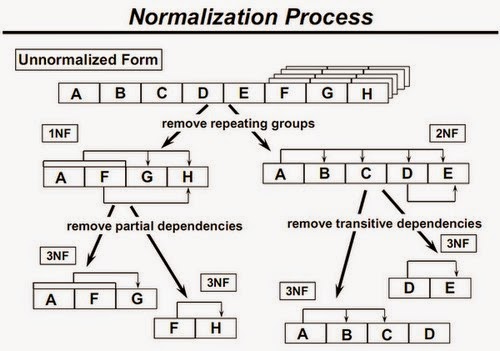Explain normalization.
Explain normalization.
In creating a database, normalization is the process of organizing it into tables in such a way that the results of using the database are always unambiguous and as intended. Normalization may have the effect of duplicating data within the database and often results in the creation of additional tables. (While normalization tends to increase the duplication of data, it does not introduce redundancy, which is unnecessary duplication.) Normalization is typically a refinement process after the initial exercise of identifying the data objects that should be in the database, identifying their relationships, and defining the tables required and the columns within each table.
First normal form (1NF). This is the “basic” level of normalization and generally corresponds to the definition of any database, namely:
It contains two-dimensional tables with rows and columns.
Each column corresponds to a sub-object or an attribute of the object represented by the entire table.
Each row represents a unique instance of that sub-object or attribute and must be different in some way from any other row (that is, no duplicate rows are possible).
All entries in any column must be of the same kind.
Second normal form (2NF). At this level of normalization, each column in a table that is not a determiner of the contents of another column must itself be a function of the other columns in the table.
Third normal form (3NF). At the second normal form, modifications are still possible because a change to one row in a table may affect data that refers to this information from another table.

